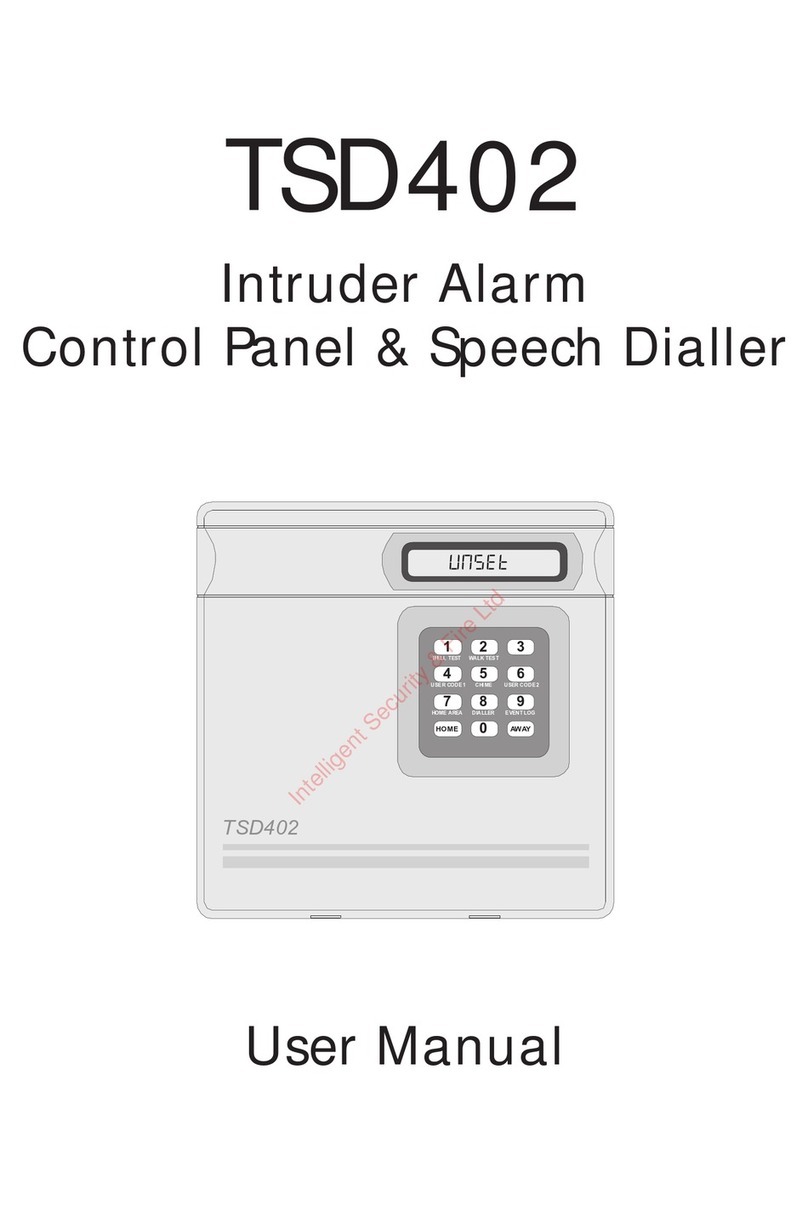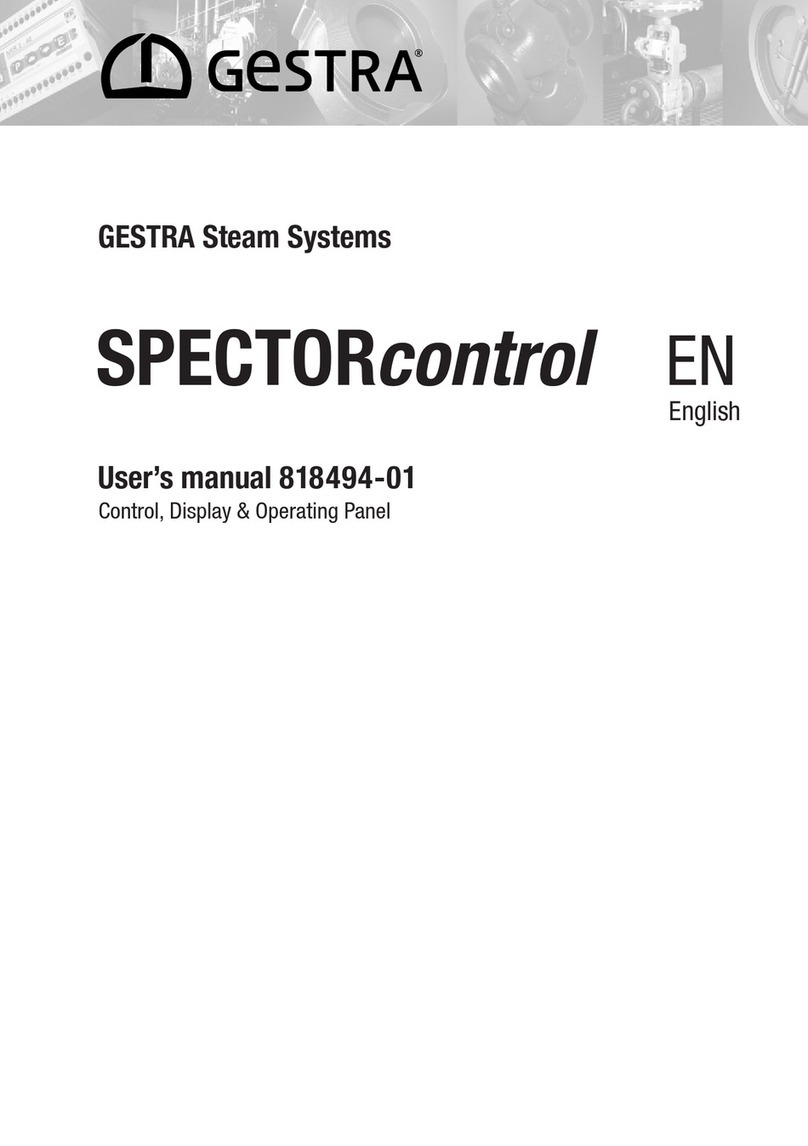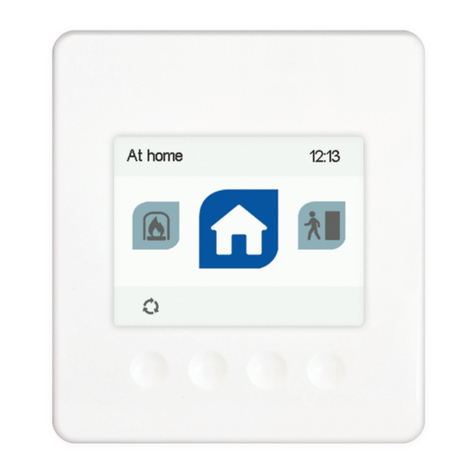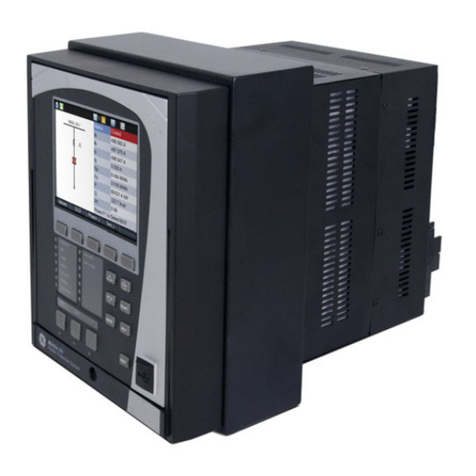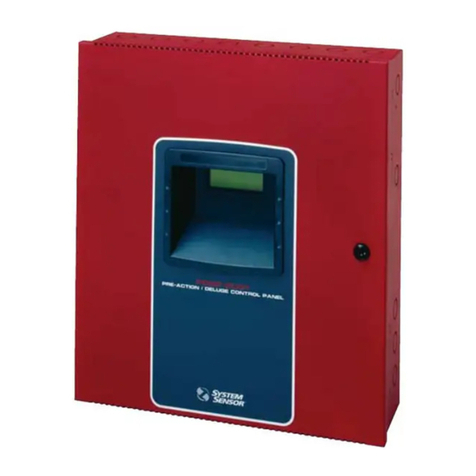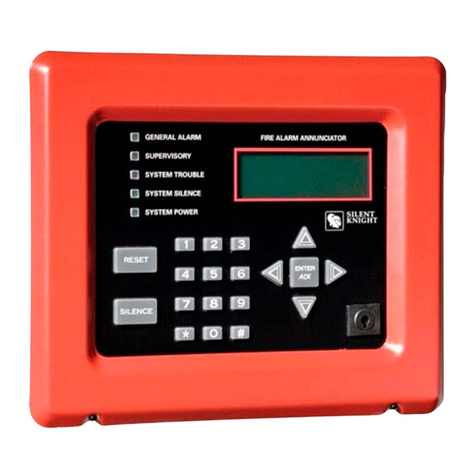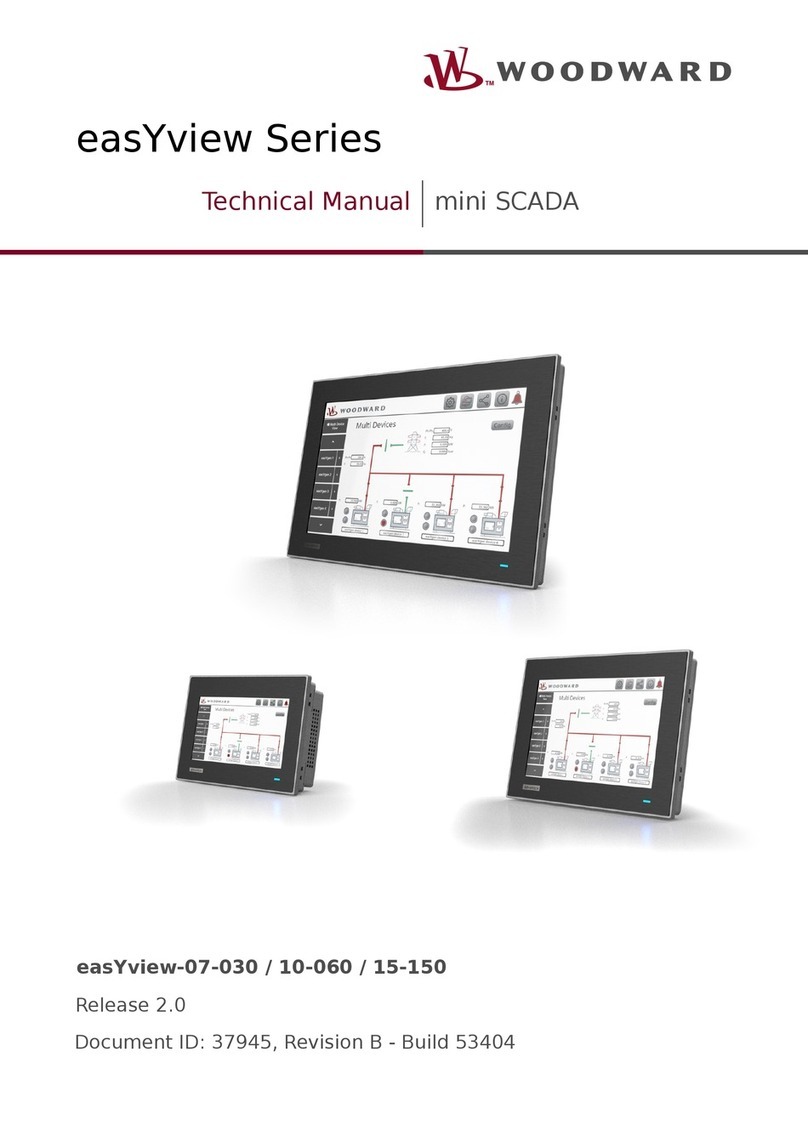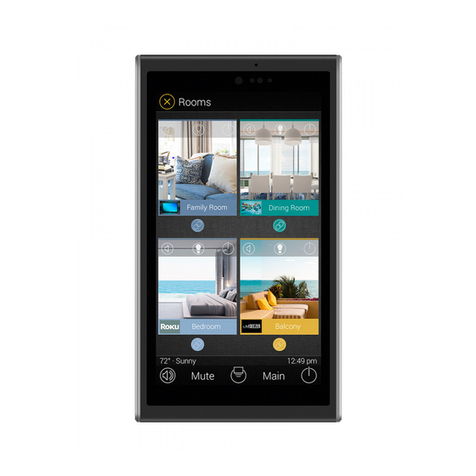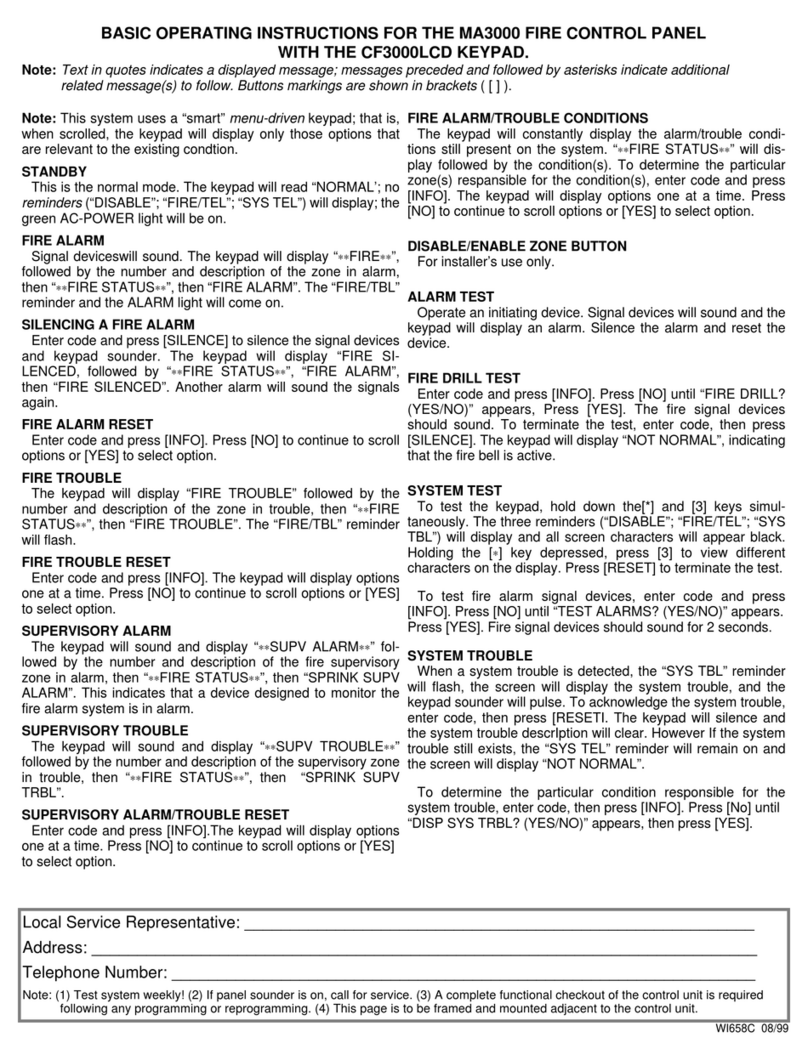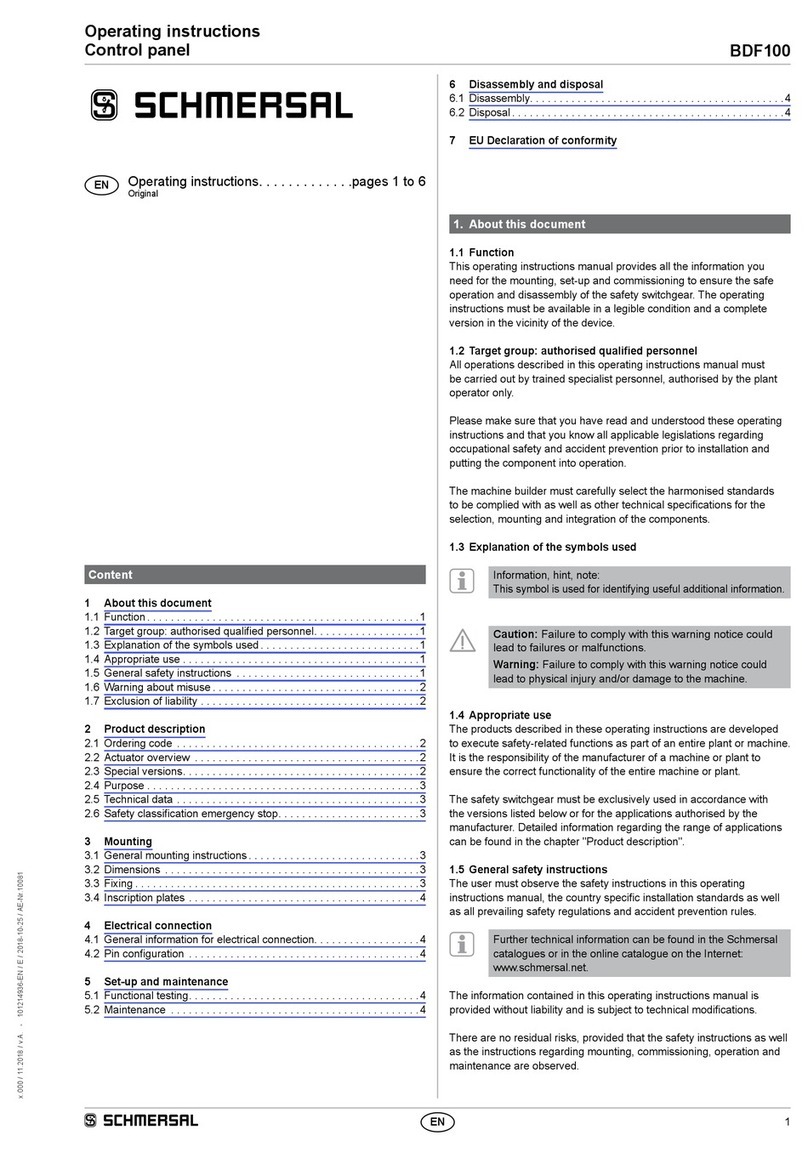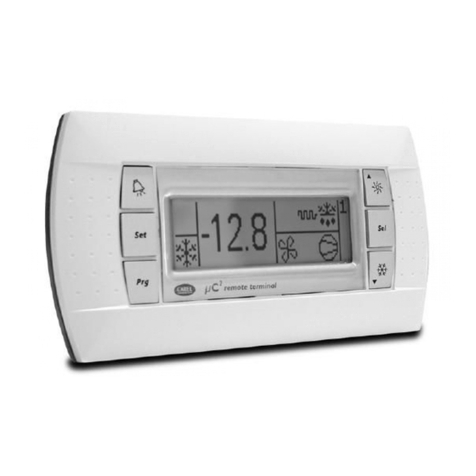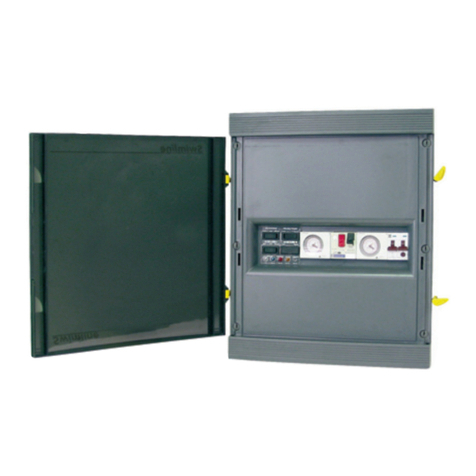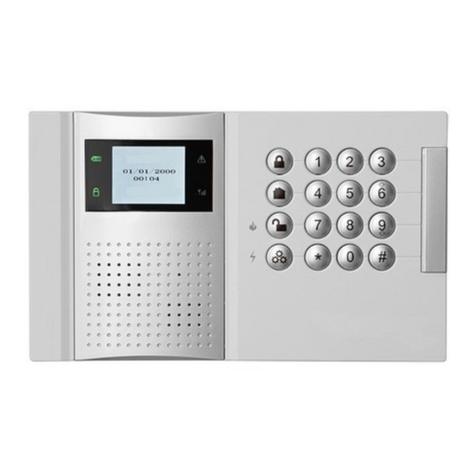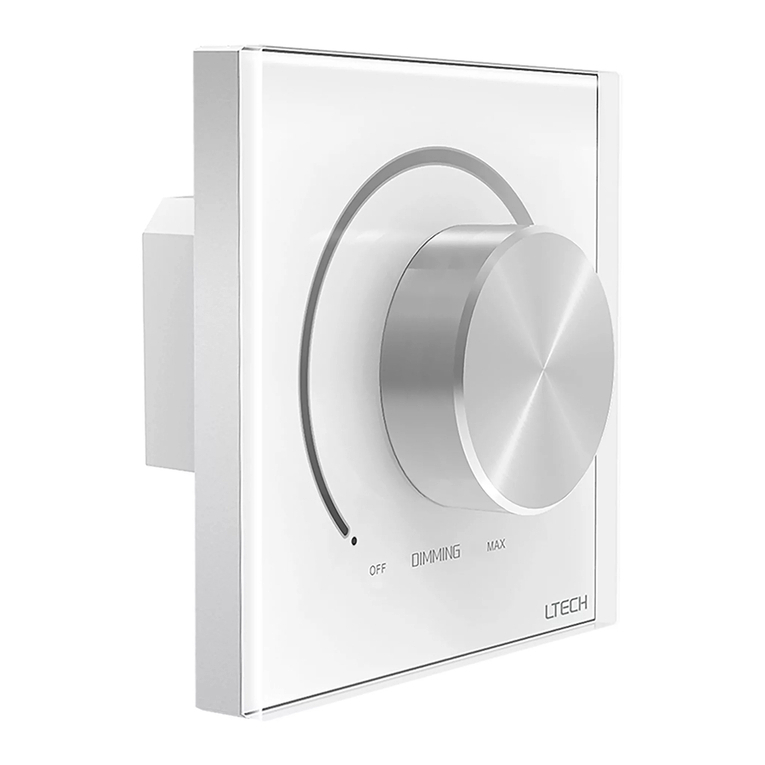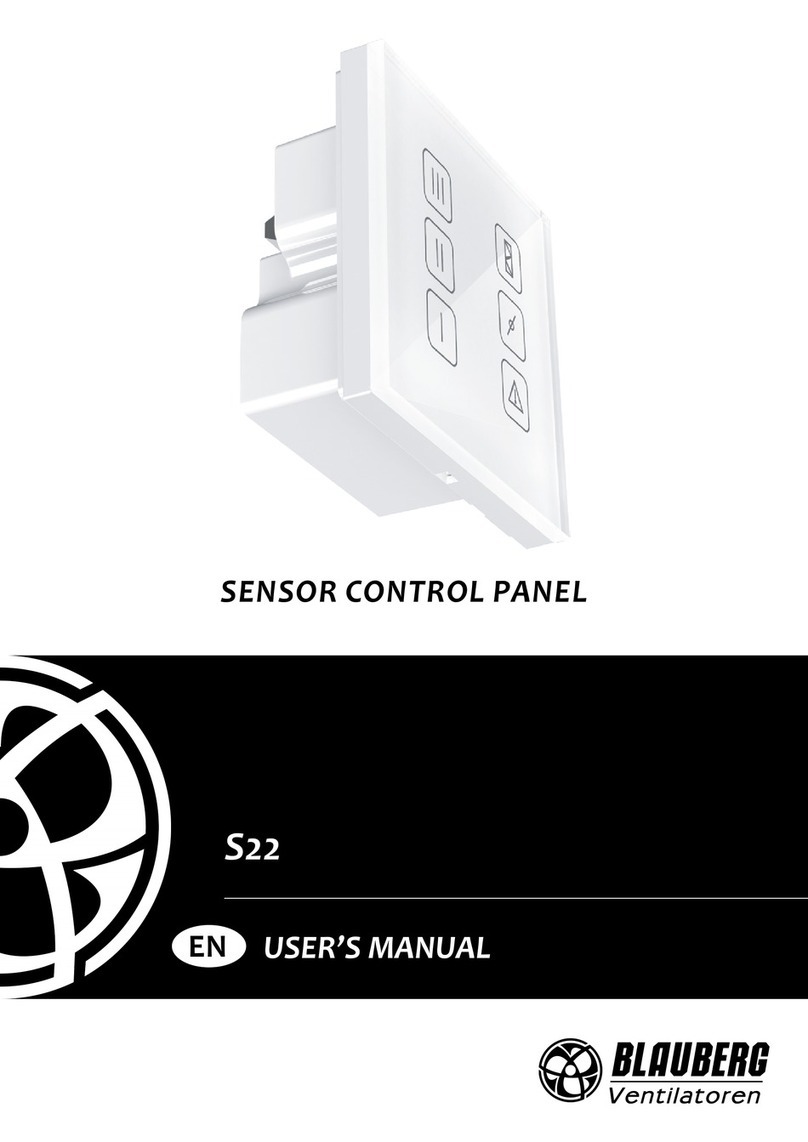Menvier Security TS700 Installation manual

TS700
Intruder Alarm Control Panel
Installation & Programming
Instructions
_
~
_
~
OPEN
1A
D
C
B
2 3
7
6
5
4
8 9
0
ENT ESC
_
~
SILENTZONEOMIT
CHIMENEWCODE 24Hr OMIT
WALKTESTBELLTESTPart Set
PartSet
Part Set
RESET
1
A
B
C
D
2 3
456
7
ENT ESC
8
0
9
Sett ing the Syst em
Ent er y our pa ss c ode XXXX
th en lea ve the pro tec t ed are a.
Unsetting the Syste m
Go dir e ctly to the ke yp ad and
en ter you r pas sc od e XXXX.
Resetting
Ent er y our pa ss c ode XXXX f o llo w ed
by EN T the n 3. Te leph o n e y ou r a l ar m
com pan y a nd foll ow th ei r instr uc t ions .
!
See U ser Man ual
FULLS ET
OPEN

Contents
Overview
Introduction.........................3
ControlPanel........................3
Remote Keypads and LECs. . . . . . . . . . . . . 3
Options............................3
Specifications .......................4
System Configuration. . . . . . . . . . . . . . . . . . 4
System Installation
CableRouting.......................5
Installing The Control Panel . . . . . . . . . . . . . 5
MainsConnections...................5
..................................5
PCBLayout..........................6
Wiring Detection Circuits . . . . . . . . . . . . . . . 7
Installing Remote Keypads and LECs. . . . . . 8
Engineer'sKeypad....................8
Installing a Plug-on Digicom . . . . . . . . . . . 10
Installing a stand-alone Digicom or RedCARE
.................................10
Sounder Connections . . . . . . . . . . . . . . . . 11
Installing Output Modules. . . . . . . . . . . . . . 12
Connecting a Printer . . . . . . . . . . . . . . . . . 12
Programmable Outputs. . . . . . . . . . . . . . . 13
Pre Power-Up Checks. . . . . . . . . . . . . . . . . 14
InitialPower-Up......................14
Power-UpChecks....................14
Factory Default Parameters . . . . . . . . . . . . 15
Programming
EngineerMenu1....................16
PanelOutputs ......................16
DigicomOutputs....................16
Plug-on Digicom Channels . . . . . . . . . . . . 16
Detection Circuits and Attributes . . . . . . . . 18
SystemTimers.......................19
SettingModes......................20
SystemPrint........................21
Remote Reset Algorithm . . . . . . . . . . . . . . 21
System Configuration. . . . . . . . . . . . . . . . . 21
Engineer'sMenu2...................22
ViewCircuits........................22
ChangeTime.......................22
ChangeDate ......................23
Change Engineer's Passcode . . . . . . . . . . 23
Configure Chime Circuits. . . . . . . . . . . . . . 23
Configure 24 Hour Omit Group . . . . . . . . . 23
PrintSystemLog.....................24
Configure Part-Set Groups . . . . . . . . . . . . . 24
ViewSystemLog....................24
ResetMasterUser1..................24
Appendices
Domestic Part-Set Application Example. . . 26
Programming procedure. . . . . . . . . . . . . . 27
Commercial Part-Set Application Example 27
Programming procedure. . . . . . . . . . . . . . 29
Installation Record
2

Overview
Introduction
The TS700 intruder alarm control system is provided for domestic and commercial intruder alarm
systems conforming to BS4737: part 1: 1986. The system consists of a control panel and at least
one remote keypad.
Control Panel
The control panel is the controlling unit for the alarm system with its own power supply and an
internal battery (supplied separately) for use during a mains failure.
It has the following facilities:
●Eight programmable detection circuits
●Bell and strobe output
●Four programmable high current outputs
●Eight programmable digicom output
●Connection for a plug-on digicom
●Extension loudspeaker output (16 Ohms)
●1.5 Amp power supply
●All system data stored in a Non-Volatile Memory (NVM)
Remote Keypads and LECs
The TS700 system will accept three types of remote keypads: The NETLED remote keypad has a 4 x
7 segment LED display and a power indicator. The NETSTAR remote keypad has a 8 character LCD
display and a power indicator. The NETARM remote arming keypad has a power indicator and a
programmable function LED. The Local Expansion Card (TS700.LEC) provides the means of
adding two detection circuits without the need of using a remote keypad. All device types can be
used on the same system, providing the total does not exceed four. Each device provides the
following facilities:
●Two programmable detection circuits
●A programmable output
Options
Additional equipment may be connected to the TS700:
●A plug-on digital communicator type DC54 or DC58 can be fitted inside the control panel to
transferpanelstatusinformationtoadedicatedalarmreceivingcentreviatheBTnetwork.
●Other types of digital communicators, RedCARE STU or Paknet interface card can be
connected to the control panel to transfer panel status information to a dedicated alarm
receiving centre via the BT network.
3
TS700 Installation Manual Overview

●A printer type CPA6.P (obsolete) or a standard RS232 serial printer via a Menvier Printer
Adaptor(MPA/DCI)can be connected toprovideaprintoutofthe200logeventsand system
parameters.
●An output module type CPA6.OM can be connected to provide an output to a set of
LEDs/relays to indicate circuit activation. Each module will provide up to eight circuit
indications and two modules can be "daisy chained" to provide up to sixteen outputs.
Specifications
Input Voltage: 240V +/-10% 50Hz
Control Panel: 110mA (normal) 190mA (alarm with extension speaker)
Power Supply Rating: 1.5 Amp
NETSTAR Remote Keypad: 50mA (normal) 60mA (alarm)
NETLED Remote Keypad: 60mA (normal) 70mA (alarm)
NETARM Arming Keypad: 30mA (normal) 40mA (alarm)
Battery: 12V 7Ah Sealed Lead Acid type
Zones with tamper loops: 10 - 16
Panel dimensions: 383w x 312h x 95d mm
Panel weight (w/o battery): 4.4kg
Remote Keypad dimensions: 150w x 100h x 30d mm
Remote Keypad weight: 280g
Environment: 0 - 55 °C
System Configuration
4
Overview TS700 Installation Manual
Printer
Speaker
Aux 12V
Printer
Bell output
Strobe output
Digi outputs 1- 8
Outputs 1- 4
Remote
Network
TS700
Number of Zones =10 to 16
8 Zones
(DP / EOL)
2 Zones
(DP / EOL)
1 Output
Remote
Keypad
or LEC
2 Zones
(DP / EOL)
1 Output
Remote
Keypad
or LEC
2 Zones
(DP / EOL)
1 Output
Remote
Keypad
or LEC
2 Zones
(DP / EOL)
1 Output
Remote
Keypad
or LEC
Figure 1. TS700 System Configuration

System Installation
Cable Routing
When installing cables ensure that detection, remote keypad, bell and mains cables are kept
separated from each other and that panel internal wiring is clear of the main PCB.
Installing The Control Panel
Proceed as follows:
1. Open the control panelby removing two screws from the front cover.Remove the coverby
sliding it up slightly to disengage the bottom clip, disconnect the earth bonding cable from
the spade connection on the front cover, then lift clear.
2. Note the position of the cable entries as follows:
(a) Ten 20mm cable entries and for detection, alarm and remote keypad cables.
(b) A 20mm cable entry for mains (240V) below the mains input terminal block.
☞The mains cable must enter the control panel through its own cable entry and must
not be mixed with other cables.
3. Hold the control panel back box in the required position (keyhole to the top) and mark the
centre of the keyhole position. Remove the back box, drill and plug the hole.
4. Screw a No 10 screw into the plugged hole. Re-position the back box and mark the
remaining four securing holes. Remove the back box, drill and plug the holes.
5. Re-position the back box and secure using not less than 30mm x No 10 screws through the
four dished 5mm holes.
6. Passallcablesintothebaseviathetrunkingholesorknockouts,grommetingasappropriate.
7. If required install and connect the following:-
(a) Stand alone digicom or RedCARE STU.
(b) Plug-on digicom type DC54, or DC58.
(c) Output modules type CPA6.OM.
(d) Printer type DATAC or serial RS232 via a printer adapter (MPA/DCI).
Mains Connections
Themainssupplyisconnectedtoa3wayterminalblockconnectoronthemainPCB.Allelectrical
connectionsmustbecarriedoutbyaqualifiedpersonandcomplywiththecurrentIEEregulations.
+TocomplywithEuropeanregulationsthesupplyshouldbe fedfroma readilyaccessible
disconnect device, e. g. un-switched fused spur fitted.
+When making mains connections it should be ensured that if the cable slips in such a
wayastoplaceastrainontheconductors,theprotectiveearthingconductorwillbethe
last to take the strain.
5
TS700 Installation Manual System Installation

PCB Layout
6
System Installation TS700 Installation Manual
PRINTER
OUTPUT MODULE
DIGI-MODEM
Auxiliary 12V
Remote
keypad
Network
connections
Programmable
Detection
Circuits 1 - 8
Digicom Outputs
Programmable @ 100mA
Auxiliary Tamper
Extension loudspeaker
External sounder
connections
Mains connection
Bell fuse (1A)
Aux. fuse (1A)
Panel Outputs
O/P -1 = Switched -ve @ 500mA
O/P -2 = Switched -ve @ 500mA
O/P +3 = Switched +ve @ 500mA
O/P +4 = Switched +ve @ 500mA
Z1 Z2 Z3 Z4 Z5
T1 T2 T3 T4 T5
CIRCUIT 1 CIRCUIT 2 CIRCUIT 3 CIRCUIT 4 CIRCUIT 5
JP5
JP4
JP4
JP3
RR
SPKR
VOL
V
NVM
AUX BELL
1 AMP1 AMP
BATTERY
FAULT
LED
POWER
ON
TRG
-
STB
-
TR- H/O
+
H/O
-
SPK
+
AUX
TAMP
LINE
FLT
+
1 2 3 4
DIGITAL COMMUNICATOR
5AUX
A
REMOTE NETWORK
B C D E
+4 +3
OUTPUTS
0V 12V
L NE
ENGINEERS
REMOTE
REMOTE
KEYPAD
1 AMP
FACTORY
RESET
JP2
DC
PWR
Z6 T6
CIRCUIT 5
Z7 T7
CIRCUIT 5
Z8 T8
CIRCUIT 5
AUX
0V 12V
Mains fuse (200mA)
6 7 -2 -18
Figure 2. TS700 Main PCB Layout

Wiring Detection Circuits
Alldetectioncircuitsmaybe wiredas"Endofline"(EOL)or"DoublePole"(DP).Bothmethodscanbe
used on the same system.
Double Pole (DP)
The DP method requires the following:
●The detector alarm and tamper contacts are connected to the zone and tamper terminals
respectively.
●The combined alarm and tamper loop resistance must be less than 100 Ohms.
●The maximum number of detection devices allowed in a circuit is ten.
●Normally open devices such as pressure pads and exit terminator buttons are connected
between the zone and tamper terminals.
●If the detection circuit is not used links can be fitted across the zone and tamper loops or
programmed as Not Used.
End Of Line (EOL)
The EOL method requires the following:
●The detector alarm contacts must have a 4K7 shunt resistor fitted.
●A 2K2 End ofLine (EOL) resistor mustbe fitted at the point inthe circuit furthestfrom the control
panel.
●Loop resistance with the EOL resistor shorted must be less than 100 Ohms.
●The maximum number of detection devices allowed in a circuit is ten.
●Normally open devices such as pressure pads and exit terminator buttons are connected
across outer terminals
●If the detection circuit is not used links can be fitted across the zone and tamper loops or
programmed as Not Used.
7
TS700 Installation Manual System Installation
Alarm
Tamper
CIRCUIT A
ZA
TA
CIRCUIT A
ZA
TA
CIRCUIT A
ZA
TA
Alarm
Tamper
Max. 10 devices per circuit
Wiring N.O. devices (Exit Terminators)
Alarm
Tamper
500 meters or 100 Ohms
500 meters or 100 Ohms
Alarm
Alarm
Tamper
Max. 10 devices per circuit
Wiring N.O. devices (Exit Terminators)
Tamper
4K7 = Yellow, Violet, Red
2K2 = Red, Red, Red
Alarm
Tamper
4K7
4K7
4K7
2K2
2K2
2K2
CIRCUIT B
ZB
TB
CIRCUIT B
ZB
TB
CIRCUIT B
ZB
TB
Figure 3. DP and EOL Circuit Connections

Installing Remote Keypads and LECs
The following types of devices may be connected to the control panel:
NETLED -4 x 7 Segment LED display.
NETSTAR -8 Character Starburst LCD display.
NETARM -Remote Arming station (Power LED & programmable "Function" LED).
TS700.LEC -2 zone local expansion card.
Any combination of devices can be used on the same system, providing the total number does
not exceed four.
1. Alwaysensurethatallpower(mainsandbattery)is removed beforemakinganyconnections
to the remote keypad.
2. Separate the cover and base by using a screwdriver to push 2 of the clips (top or bottom)
inward from the base indents, then lift the cover assembly, noting that the PCB is fixed to the
under side of the cover.
3. Holdthebaseinposition(keyhole tothetop) andmarkthe three securing holes,drilland plug
the wall as required. Pass all the cables into the base via the cable entry points as
appropriate and secure the base to the wall.
4. Connect “Remote Network” and detection circuit cables to the appropriate terminals, see
Figure 4.
5. Set the I/D selector jumper link to the required position:
I/D Selector Circuit A Circuit B Panel Output
1 09 10 5
2 11 12 6
3 13 14 7
4 15 16 8
ENG / NULL N/A N/A N/A
☞No two remote keypads or LECs should have the same I/D.
☞If the I/D is set to “ENG” the remote keypad will function as an Engineer’s keypad
allowing it to be plugged onto the control panel so that system programming and
testing may be carried out (see Engineer’s Keypad).
6. For details on all remote keypad option links, please refer to the instructions supplied with the
remote keypad.
7. Finally clip the remote keypad cover onto the base being careful not to trap any cables or to
obstruct the tamper switch.
Engineer's Keypad
Normally all system programming will be carried out from one of the installed remote keypads.
However sometimes it may be more convenient to program the system at the control panel, this
can be achieved by using an Engineers Keypad. This is temporarily plugged on to the control
panel (JP2). To convert a standard remote keypad to an "Engineers Keypad" an interface lead
can be obtained from your supplier (P/No. NETEKI).
8
System Installation TS700 Installation Manual

9
TS700 Installation Manual System Installation
Remote
Network
Spare Core
Control Panel
Power for
detectors Power for
detectors Power for
detectors Power for
detectors
I/D=2I/D=1 I/D=3 I/D=4
Remote
Keypad
or LEC
A B C D E
Remote
Keypad
or LEC
A B C D E
Remote
Keypad
or LEC
A B C D E
Remote
Keypad
or LEC
A B C D E
A
B
C
D
E
100m (Max.)
+ + + +
Figure 4. Remote Keypad & LEC connections
NETARM / NETLED Remote Keypad NETSTAR Remote Keypad
I/D
Selector
REMOTE
I/D
LED MIMIC
ENT KEY
DISABLED
1
2
3
4
ENG
CCT B
CCT B
ZB
ZB
TB
TB
CCT A
CCT A
ZA
ZA
TA
TA
WARD SOUNDER
CONTROL
A B C D E
Display Module
O/P
-
I/D
Selector
REMOTE
I/D
LED MIMIC
ENT KEY
DISABLED
1
2
3
4
ENG
WARD SOUNDER
CONTROL
Display Module
CCT B
CCT B
ZB
ZB
TB
TB
CCT A
CCT A
ZA
ZA
TA
TA
A B C D E O/P
-
Programmable output
switched -ve
@100mA
Remote network
connections
Programmable output
switched -ve
@100mA
Remote network
connections
2 Detection
Circuits 2 Detection
Circuits
Figure 5 NETARM, NETLED & NETSTAR Remote Keypads

Installing a Plug-on Digicom
1. A digicom type DC54 or DC58 can be fitted in the base of the TS700 main panel. The unit
should be fitted in accordance with the installation instructions supplied with it and
connected to JP3.
2. The alarm channels for the plug-on digicom are programmed as required (page 16). It will
be necessary to fit a programmed NVM in the digicom or to program it in accordance with
the instructions supplied with the unit.
Installing a stand-alone Digicom or RedCARE
A stand-alone digital communicator, Red CARE STU or Paknet interface card can be connected
tothesystem totransferpanelalarmstatusinformationtoadedicatedalarmreceivingcentre.The
control panel has the following connections (Figure 6) for a digicom etc.
1 to 8 -These are the programmable digicom outputs. They are normally at +12V
and switch to 0V when active.
+DC POWER -This provides a permanent +12V power to the digicom. The output is
un-fused and therefore should only be used if the digicom is fitted inside
the control panel.
LINE FLT -When this input is switched to +12V a telephone line fault condition will be
generated.
REM RESET -Ifthe system is programmed for “Engineer Reset”, then after a full alarm the
system will require resetting, normally this is done by the engineer or coded
remote reset. Applying a -ve to this input terminal will cause the system to
reset after a full alarm. This input could be connected to the “Control”
output on a RedCARE STU so that the Alarm Receiving Centre can poll the
STU and thus reset the panel.
10
System Installation TS700 Installation Manual
Control
Panel 3GSTU
1
1
+DC POWER
Program
As:-
Open (08)
Alarm (05)
PA (06)
Fire (07)
LINE FLT
AUX 0V
2
2
3
3
4
4
5
TB1
Channel Inputs are
Programmed as
Positive Removed
TB2 TB3
TB4
Control
Line
Fault RPS
5
6
6
7
7
0V
NO NO NONC NC NC
8
8
C CC
A+ A+ A+ A+ V+
Figure 6. 3GSTU RedCARE Connections

Sounder Connections
The external and internal sounder can be connected to the control panel using the following
connections:
AUX TAMP -These terminals provide tamper protection to auxiliary devices such as
power supplies, extension loudspeaker units etc.
SPK+ -Extension loudspeakers may be connected between [SPK+] and [H/O-].
The minimum impedance is 16 Ohms. Up to two may be connected to the
control panel.
Do NOT run extension loudspeakers within the same cabling as remote
keypads or LECs.
H/O - -This is used to provide a permanent -ve hold off to external sounders.
H/O + -This is used to provide a permanent +ve hold off to external sounders,
strobes etc. It is protected by a 1 Amp fuse (Bell 12V).
TR - -This is the negative tamper return connection from the siren or bell.
STB - -This is the strobe output which will switch to 0V on alarm and draws a
maximum of500mA.Connecttheothersideofthestrobetothe[H/O+].
TRG - -This output can be programmed to be either an SAB or SCB and operates
as follows:
SAB: TRG-willswitchto0Vonalarmandwillsinkamaximumof500mA.
SCB: TRG - will provide a negative hold off, which is removed on alarm.
11
TS700 Installation Manual System Installation
Typical
External Sounder
Control
Panel
H/O - 0V
H/O + +12V
Tamper In
TR -
STB - Tamper Out
TRG - Strobe +ve
Strobe -ve
Trigger -ve
Figure 7. External and Internal Sounder Connections

Installing Output Modules
Output modules (CPA6.OM) can be used to provide an output to a set of LEDs to indicate circuit
activations (mimic). Output modules will normally be fitted inside the equipment they are
controllingandcanbepositioned upto500 metresawayfrom themainpanel.Theymaybefitted
inside the TS700 by fitting posts and securing them to the base.The outputmodule should be used
and connected in accordance with the output module instructions provided (Figure 8).
Connecting a Printer
The printer model type CPA6.P (obsolete) may be directly plugged on to the control panel plug
labelledPRINTER. Alternatively other models suchastheDATAC orany standardRS232 serial printer
can be connected to the control panel via a MPA/DCI. Menvier Security supply a DATAC printer kit
whichconsistsofaportableRS323printer,chargerandDCI.TheDCIcanbepurchasedseparately
if you require to source your own RS232 printer.
12
System Installation TS700 Installation Manual
PL1
1k Resistors
LED's
1 2 3 4 5 6 7
+12V IN
+12V OUT
+12V OUT
8
PL2
To next OM
Connect to plug
labelled OUTPUT
MODULE
100m
Figure 8. Output Module Connections
MPA
or DCI
DATAC or RS232 printer
CPA6 Printer
RS232 Data
Connect to JP1
PRINTER
Connect to JP1
PRINTER
1
1
CPA6 P
CPA6P
DATA IN POWER PAPER FEED
PRINTER SETUP
Baud Rate
Parity
Stop Bits
Data Bits
DTR
= 4800
= None
= 2
= 8
= Normal
Figure 9. Datac Printer Set-up and Connections

Programmable Outputs
The TS700 has many programmable outputs which can be used to drive relays, LED’s etc. Each
output can be programmed for a different function, see "Programmable Output Types" on page
17.
Control Panel Outputs
The control panel has four high current programmable outputs:
[-1] -Set of voltage free changeover contacts rated at 1 Amp.
[-2] -Switched -ve output rated at 500mA.
[+3] -Switched +ve output rated at 500mA.
[+4] -Switched +ve output rated at 500mA.
Remote keypads & LEC Outputs
Each remote keypad and TS700 LEC has one programmable output:
[O/P] -Switched -ve output rated at 100mA.
13
TS700 Installation Manual System Installation
RelayRelay
Smoke
Detector Smoke
Detector
Relay available from
RS components
P/No. 346-946.
Capable of switching
mains voltages
Relay available from
RS components
P/No. 346-946.
Capable of switching
mains voltages
+ 12 V + 12 V
Aux 12 V
Aux 0V -ve O/P
+ve O/P
(Programmed as Alarm / Bell / etc)
(Programmed as Alarm / Bell / etc)
(Programmed as Detector Reset)
(Programmed as Detector Reset)
Aux 0V
Aux 0V
Aux 0V
+ve Outputs -ve Outputs
1K0 Ohm Resistor
12V Buzzer
RS Part No. 245-051
12V Buzzer
RS Part No. 245-051
1K0 Ohm Resistor
LED (Light Emiting Diode) LED (Light Emiting Diode)
-Ve O/P
-Ve O/P
-Ve O/P
+ve O/P
+ve O/P
+ve O/P
Aux 12V
Aux 12V
Aux 12V
0V 0V
Diode (IN418)Diode (IN418)
Figure 10. Programmable Outputs Wiring Examples

Pre Power-Up Checks
Once the system is installed, but prior to powering-up give the system one final check to ensure
that:
1. The wiringconforms to the requirementsdetailed in this manualand that allinterconnections
are correct (A to A, B to B etc.).
2. All system cables are kept clear of mains supply cables, telephone cables and R.F. cables. It
is recommended that cable ties be used to keep cables separated.
3. Verify that maximum cable lengths and resistances are not exceeded.
4. Mains power supply cables to the system are connected to an un-switched fused spur.
5. Grommets are used where cables enter metal housings to ensure that insulation is not
compromised.
Initial Power-Up
To power the system for the first time:
1. Place a small screwdriver blade between the pins on the control panel PCB, marked
"FACTORY RESET". This will ensure the factory default parameters are set (see Table 1).
2. Switch on the 240V mains supply and remove screwdriver blade.
3. Check that power LED on the control panel PCB is illuminated.
4. Check that the remote keypads display "LT" (Panel Lid tamper). The remote keypad
sounders and extension loudspeakers will operate.
5. Enter the engineers passcode (default 1234) to silence the sounders.
6. Connect the standby battery.
Power-Up Checks
When the initial power-up checks have been completed, check the following:
1. UsingavoltmetermeasuretheDCvoltageateach remotekeypadandensure thevoltageis
greater than 11V whilst running on the system standby battery.
2. Usinga voltmeter measuretheDC voltagebetween mainsearthand +12V,andthevoltage
between mains earth and 0V. In both cases the measurement should be 1V or less. If the
Voltage is greater than 1V, the system has an "Earth Fault" and all cables should be checked
for isolation to earth.
3. Using a voltmeter set to a low DC voltage range, measure the voltage across the control
panelPCBtestpoint(V).Tocalculatethesystem currentconsumption multiply the reading by
ten, e.g., a reading of 70mV = 700mA. Ensure that the reading is not greater than 1.0A.
4. Repeat test (3) with the system in an alarm condition and ensure that the reading is not
greater than 1.0A.
5. The system is now ready to be programmed see "Programming".
14
System Installation TS700 Installation Manual

Factory Default Parameters
Engineer's code 1234
Master User
code 5678
Panel and
Remote Outputs
12345678
Walk Test Courtesy
Light Switched
12V Detector
Reset Code
Accepte
d
Code
Accepte
d
Code
Accepte
d
Code
Accepte
d
Digicom Outputs
& Channels
12345678
Fire PA Alarm Set Eng on
Site Bell On Tamper Second
Alarm
Detection
Circuits 01: Final Exit 02: Night (access) 03-06: Night 07: Exit Terminator
08: PA Audible 09: Final Exit 10: PA Audible 11-16:Not Used
System Timers
0123
ACPO Delay
0 seconds No Re-arms
0Settling Time
07 seconds Digicom Delay
0 Seconds
4567
Exit Time
30 Seconds Entry Time
30 Seconds Bell Duration
20 Minutes Bell Delay
0 Minutes
8 9
Double Knock
0 Seconds Test Time
14 Days
Setting Modes Full Set
Final Exit Part Set A
Timed Exit Part Set B
Timed Exit Part Set C
Timed Exit
Reset Algorithm 004
System
Configuration
0123
Bell output is SAB User 1 has access
to all user menus Fire signalled at all
times 24 Hour circuits are
audible
4567
bell is delayed for
30 seconds in part
set
Alarm output is
cleared on reset Setting with line fault
or mains failure is
allowed
System reset by user
8 9
Continuous entry
and exit tones Engineer code only
for access to
engineer menus
Table 1. Factory Default Parameters
15
TS700 Installation Manual System Installation

Programming
Engineer Menu 1
Engineersmenu 1 isselected when theengineer'spasscodeisenteredduringtheunsetcondition.
The engineer may leave engineer menu 1 by pressing the [ESC] key. The system will return to the
unset condition but the remote keypads will show: "ENG ON SITE". This message will be cleared the
next time a valid user passcode is entered. When engineers mode is selected the monitoring of
tamper circuits is disabled.
Panel Outputs
Outputs1to 4forthecontrolpaneland 5 to8 fortheremotekeypads canbeprogrammed to any
of the output function types 0 to 55 as listed in Table 2 on page 15.
1. Ensure that "Engineer Menu 1" is selected.
2. Press 1to select the Panel Outputs option.
3. The display will show: PAN.-
4. Enter the required output number 1 to 8.
5. The display will show the current output function (Table 2).
6. Enter the new function number and press [.
7. The display will return to step 3. Repeat steps 4 to 7 for the
remaining outputs.
8. Press ]to return to "Engineer Menu 1".
Digicom Outputs
The eight switched -ve Digicom outputs 1 to 8 may be connected to the Digicom channel inputs.
The outputs may be programmed to any of the function types 0 to 55 (Table 2).
1. Ensure that "Engineer Menu 1" is selected.
2. Press 2to select the Digicom Outputs option.
3. The display will show: DIG.-
4. Enter the required digicom output number 1 to 8.
5. The display will show the current output function (Table 2).
6. Enter the new function number and press [.
7. The display will return to step 3. Repeat steps 4 to 7 for the
remaining digicom outputs.
8. Press ]to return to "Engineer Menu 1".
Plug-on Digicom Channels
The eight channels for the plug-on digicom may be programmed to any of the function types 00
to 55 (Table 2). The procedure is similar to programming the digicom outputs (above).
1. Follow above procedure, except press 3at step 2.
16
Programming TS700 Installation Manual
PAN.-
Enter panel output 1 - 4 or
remote output 5 - 6.
04
Enter new output type 00 - 55
(see Table 2.)
DIG.-
Enter digicom output 1 - 8.
04
Enter new output type 00 - 55
(see Table 2.)
Dc3.-
Enter digicom output 1 - 8.

No Type Function
00 Bell On Active when the external Bell trigger is activated.
01 Strobe Active when the Strobe trigger is activated.
02 SW12 Used to latch devices in an alarm. Active when the system is set.
03 Detector Reset Used to power devices which require power to be removed to reset them.
04 Walk Test Active when a Walk Test is in progress.
05 Alarm Active when intruder alarm is present.
06 PA Active when a PA alarm is present.
07 Fire Active when a Fire alarm is present.
08 Set Active when the system is Set.
09 Code Accepted Active for 10 seconds when any valid passcode is entered.
10 24 Hour Active when a 24 hour circuit is in alarm.
11 Second Alarm Active when a second circuit causes an alarm, use for ALARM CONFIRMATION.
12 Courtesy Light Active when any keypad is in use.
13 Engr on Site Activewhentheengineer'spasscodeisentereduntilaUserpasscodeisentered.
14 Ccts Omitted Active when circuits are omitted.
15 Auxiliary Active when an Auxiliary circuit is in alarm.
16 Sndr Control Can be used as the 0V connection to an extension loudspeaker so that the
sounder is muted during keypad entries. Only suitable for panel outputs 1 & 2.
17 Area Set A Active when area A is Set.
18 Area Set B Active when area B is Set.
19 Area Set C Active when area C is Set.
20 Tamper Active when a Aux, or circuit tamper is triggered.
21 Line Fault Active when a digicom telephone line fault occurs.
22 Mains Off Active when mains power is removed.
23 Exit/Entry Active during exit and entry.
24 Test Fail Active when a circuit on Test is activated.
25 First Knock Active when a double knock is activated for the first time.
26 DC Failed Active if the digicom fails to communicate.(plug-on)
27 DC Successful Active when the digicom sends a message and it is acknowledged. (plug_on)
28 DC Active Active while the digicom is triggered.(plug-on)
29 Second Entry Active when the second entry timer is started.
30 Entry Active when the system is set or part set and the entry route is in use.
31 Exit Active when the system exit procedure is started.
32 Part Set C fail Active when Part Set area C fails to set.
33 Part Set B fail Active when Part Set area B fails to set.
34 Part Set A fail Active when Part Set area A fails to set.
35 Part Set Active when ever the system is Part Set.
36 Area C Alarm Active when Area C Alarms.
37 Area B Alarm Active when Area B Alarms.
38 Area A Alarm Active when Area A Alarms.
39 Duress Alarm Active when a duress code is entered at a keypad.
40- 55 Circuit mimic Will mimic (active when circuit is active) circuits 1 to 16 respectively .
Table 2. Programmable Output Functions
17
TS700 Installation Manual Programming

Detection Circuits and Attributes
Detection circuits 1 to 8 for the panel and 9 to 16 for the remote keypads/ LECs are programmed
as follows:
1. Ensure that "Engineer Menu 1" is selected.
2. Press 4to select the Circuits and Attributes option.
3. Select circuit number (01 - 16) and press [. The current circuit
type will be displayed.
4. Enter the new circuit type, using keys 0 to 9, or A, B or C (Table 3).
Press [to accept.
5. The circuit number, type and attributes are displayed in turn.
6. Select new attributes by using keys 1 to 5 (Table 4) these will
"toggle" the attributes on & off. Press [to accept.
7. Continue for remaining circuits with steps 3 to 5.
Key Display Circuit Type
0NoTU Not Used - A circuits that is not monitored.
1NITE Night - A circuit that will generate a full alarm when the system is set.
224HR 24 Hour - A circuit which is monitored at all times. When activated in the unset condition a
localalarm isgeneratedandwhenactivated inthesetconditionafullalarm isgenerated.
3PA S PA Silent - Acircuitwhichismonitored at alltimes.When activated it willsignalaP.A. onthe
Digicom outputs and activate any other outputs that have been programmed as P.A.
4PA A PA Audible - A circuit which is monitored at all times. When activated it will signal a P.A. on
the digicom outputs, activate any other outputs that have been programmed as P.A. and
generate a full alarm condition.
5FIRE Fire - A circuit that is normally connected to a smoke or heat detector. When activated it
will generate a fire tone on internal sounders and the external sounders are pulsed.
6Au Auxiliary - A circuit which is monitored at all times. When activated it will cause any of the
outputs that have been programmed as `Auxiliary' to go active.
7FE Final Exit - This must be the last detector or door contact that is activated when leaving or
entering the protected area. When the setting mode for the area is programmed for "Final
Exit" setting, opening and closing of this circuit during the exit procedure will cause the
system or area to set. Once set, activation of this circuit will start the entry timer.
8ET Exit Terminator - A circuit that is normally connected to a push button outside the
protected area, which operates as follows:
a) Whenthesetting mode is programmed as"Timed Exit",activationofthis circuit willcause
any remaining exit time to be truncated to zero.
b) When the setting mode is programmed as "Exit Terminator", the area will set when the
Final Exit circuit has been operated and the exit terminator button is pressed.
9FULL FullSet Keyswitch - A circuit which can be connected to a keyswitch to allow the system to
be full-set (active) and unset (healthy).
APSA Part-Set A Keyswitch - A circuit which can be connected to a keyswitch to allow part-set
group A to be set (active) and unset (healthy).
BPSB Part-Set B Keyswitch - A circuit which can be connected to a keyswitch to allow part-set
group B to be set (active) and unset (healthy).
CPSC Part-Set C Keyswitch - A circuit which can be connected to a keyswitch to allow part-set
group C to be set (active) and unset (healthy).
Table 3. Circuit Types
18
Programming TS700 Installation Manual
CT.--
Enter circuit number 01 - 16.
NITE
Enter new circuit type 0 - 9 or A,
B or C (see Table 3.)
Acc
Press 0 - 5 to `toggle' circuit
attributes on & off (see Table 4.)

Key Display Attribute Type
1Acc Access - Circuits programmed with this attribute are automatically isolated during the
entry procedure to allow a "walk through" route for the user to access the remote keypad.
When the system is part set activation of a circuit with the "Access" attribute will start the entry
timer. The Access attribute may only be assigned to Night circuit types.
22AcT Double Knock - Circuits programmed with this attribute will only cause an alarm if:
a) ThecircuitisactivatedtwicewithintheDoubleKnockwindow(thistimemaybesetinthe
System Timers menu).
b) The circuit remains active for the whole duration of the Double Knock window.
TheDoubleKnockattributemayonlybeassignedtoNight,24hrandAuxiliarycircuittypes.
3TEST Test - Circuits with this attribute will be disabled from the system for the period set by the
"Test Time" (see System Timers). If the circuit is activated during this period the activation will
be logged and the user is informed of the circuit failure when trying to set the system. The
testfailmessagemay only be cleared with the engineer'spasscode.Ifat the end ofthetest
period no activations have occurred the circuit is automatically removed from test and
behavesas normal.The testperiod is initiated by entering theengineer'spasscode.The test
attribute may only be assigned to Night, 24hr, PA Silent, PA Audible, Fire and Auxiliary circuit
types.
4ISOL Isolate - Circuits with this attribute are allowed to be omitted by the user when setting the
system.Theisolate attributemayonlybeassignedtoNight,24hrandAuxiliarycircuittypes.
5RST Reset - This attribute is normally assigned to a circuit that is connected to a Vibration or
Smoke detector, so that during the "Detector Reset" period the circuit is not monitored. The
Reset attribute may only be assigned to Night, 24hr, Fire and Auxiliary circuit types.
Table 4. Circuit Attributes
System Timers
There are ten separate system timers which are shown in Table 5a and 5b.
1. Ensure that "Engineer Menu 1" is selected.
2. Press 5to select the System Timers option.
3. The display will show: Tir.-
4. Enter the required timer number 0 to 9.
5. The display will show the current timer setting.
6. Enter the new timer value and press [.
7. The display will return to step 3. Repeat steps 4 to 7 for the
remaining outputs.
8. Press ]to return to "Engineer Menu 1".
Key Timer Range Function
0ACPO Delay 0-199sec ForACPO requirements thistimerisnormallyset to90 seconds.Ifduring the
entry procedure the user deviates from the entry route and causes an
alarm, the communication of the alarm signal to the central station is
delayed by this timer.
1Re-Arms 0-199 At the end of the bell duration time the system re-arms all circuits that are
healthy. Circuits that are still in an alarm are isolated until they change to a
healthy condition. This timer controls the number of times that a circuit will
re-arm before it is locked out of the system.
Table 5a. System Timers
19
TS700 Installation Manual Programming
Tir.-
Enter timer number 0 - 9. (see
Table 5a & 5b)
030
Enter timer value 000 -199. (see
Table 5a & 5b)

2Settling Time 0-199 sec When setting the system by "Final Exit" or "Exit Terminator", detectors that are
on the exit route sometimes take 3-4 seconds to settle after activation. The
delay programmed in this timer is used to allow these detectors to settle
before the system or area is set.
3Digicom Delay 0-199 sec When the system is part-set the communication of an alarm signal to the
central station may be delayed by the value set in this timer.
4Exit Time 0-199 sec This timer sets the delay between the user initiating the exit procedure and
the system (orarea)actuallySetting.Ifduring theexittimeanExitTerminator
circuit is activated the exit time is cancelled and the system sets
immediately.
5Entry Time 0-199 sec The time allowed for entering the protected premises via the entry route
when the system is (Part) Set . The time is allocated to two entry periods. A
warning is given if the first is exceeded and a full alarm occurs if the second
is exceeded.
6Bell Duration 0-199 min The duration time of the bell and sounders when an alarm occurs.
7Bell Delay 0-199 min This timer delays the activation of the bell output and internal sounders.
8Double Knock 0-199 sec This is the Double Knock time window in which either:
Two circuit activation must occur within this time to generate an alarm
condition. Or the circuit must remain active for the whole duration of this
time to generate an alarm condition. This will only apply to circuits with the
Double Knock attribute
9Test Time 0-30 days This timer varies the number of days that Test attribute may be applied to a
circuit. If the time is set to 000 then circuits will remain on test until the "Test"
attribute is removed.
Table 5b. System Timers
Setting Modes
The system may be set by one of the following modes:
Final Exit -The system or area will set when the "Final Exit" circuit is activated and after
the "Settle Time" has expired.
Exit Terminator -The system or area will set when the "Final Exit" circuit is activated, the "Exit
Terminator" button is pressed and after the "Settle Time" has expired.
Timed Exit -The system or area will set when the "Exit Time" has expired or if the "Exit
Terminator" button is pressed.
The setting mode for full-set, part-set groups A, B and C are programmed as follows:
1. Ensure that "Engineer Menu 1" is selected.
2. Press 6to select the Setting Modes option.
3. The display will show: S.BY-
4. Select setting group by pressing:
0for full-set
Afor part-set group A
Bfor part-set group B
Cfor part-set group C
5. The display will show the current setting mode.
20
Programming TS700 Installation Manual
S.BY-
Enter setting group 0,A,B or C.
F-FE
Enter setting mode 1,2,3 or 0.
Table of contents
Other Menvier Security Control Panel manuals

Menvier Security
Menvier Security TS690 Assembly instructions
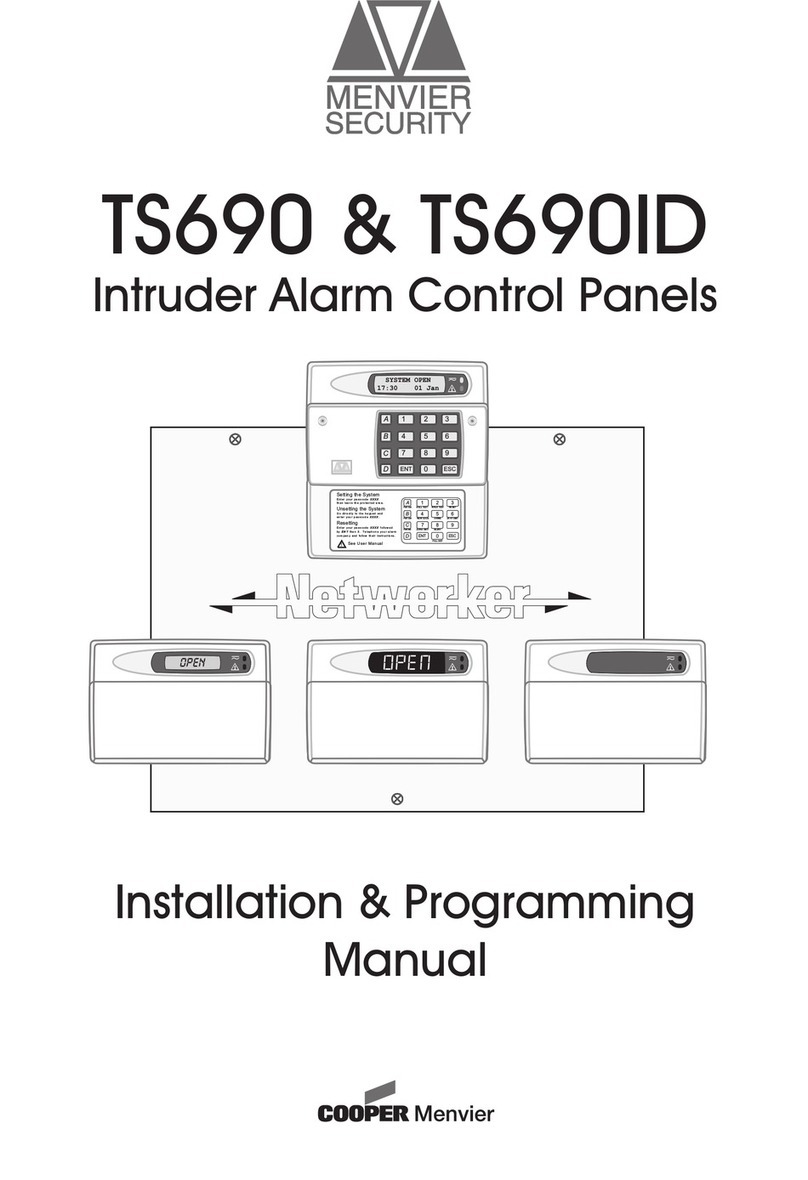
Menvier Security
Menvier Security TS690 Assembly instructions
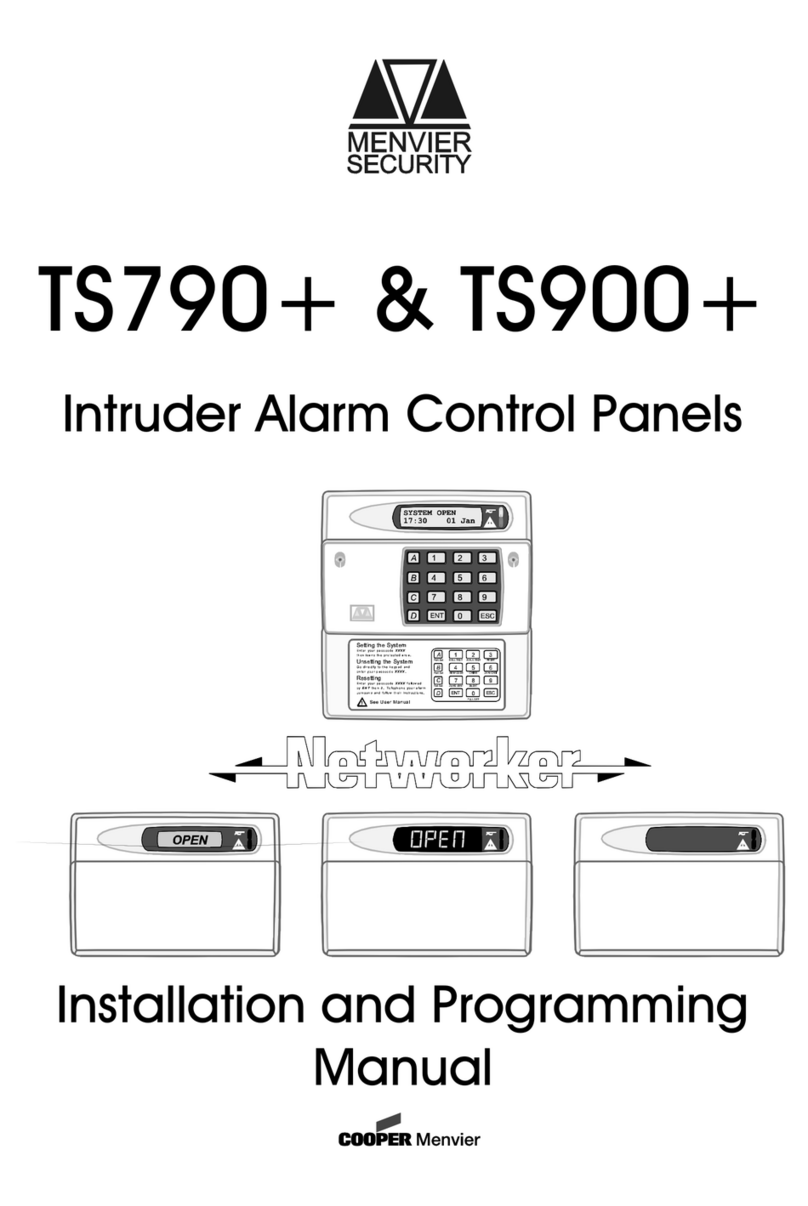
Menvier Security
Menvier Security TS790+ Assembly instructions
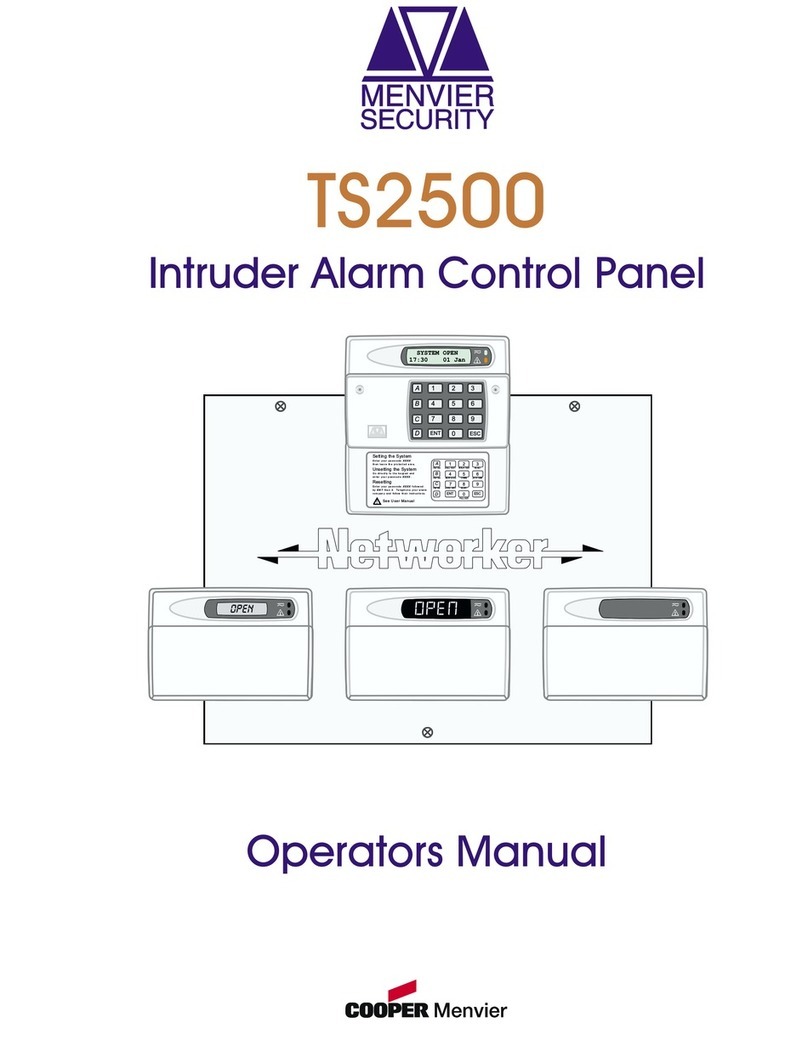
Menvier Security
Menvier Security TS2500 User manual

Menvier Security
Menvier Security TS510 User manual
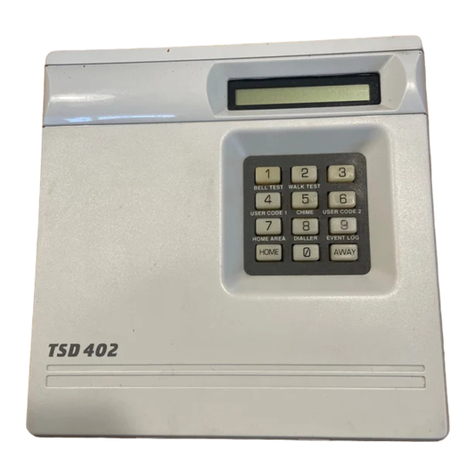
Menvier Security
Menvier Security TSD402 Operation manual

Menvier Security
Menvier Security TS400 Installation manual
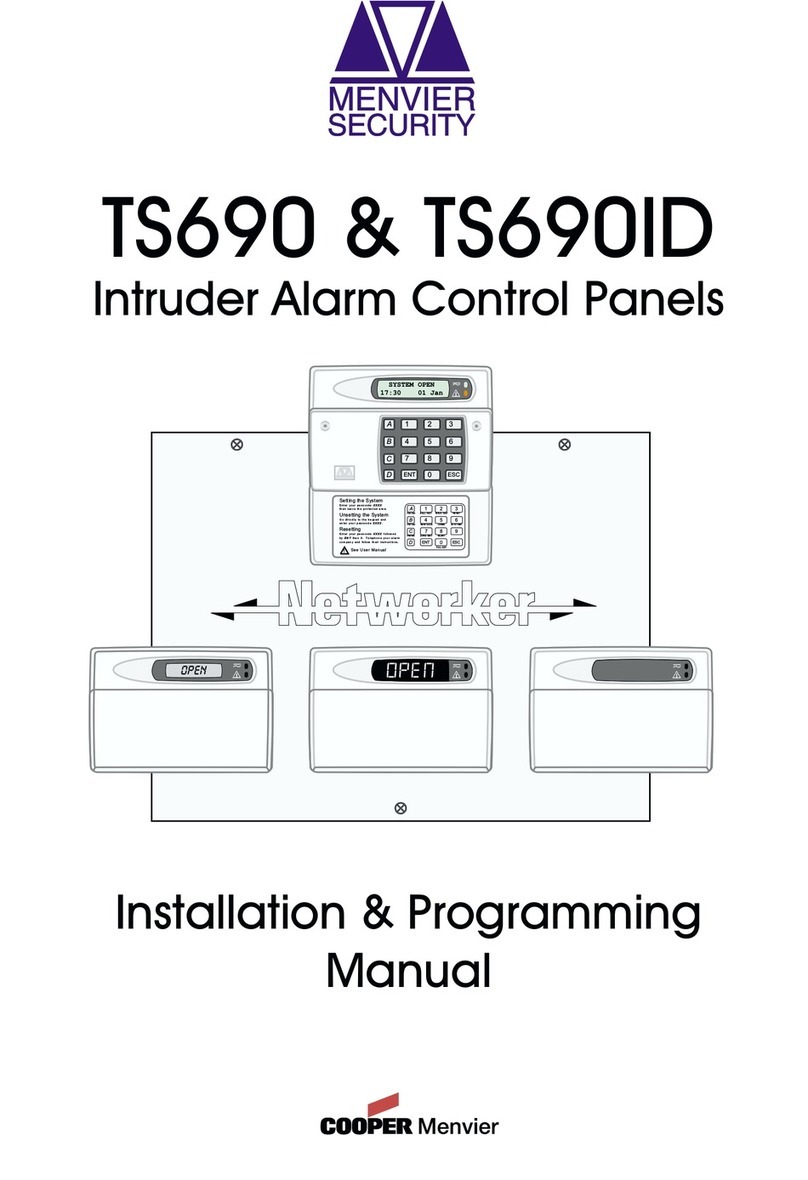
Menvier Security
Menvier Security TS690 Assembly instructions

Menvier Security
Menvier Security TS590 Assembly instructions
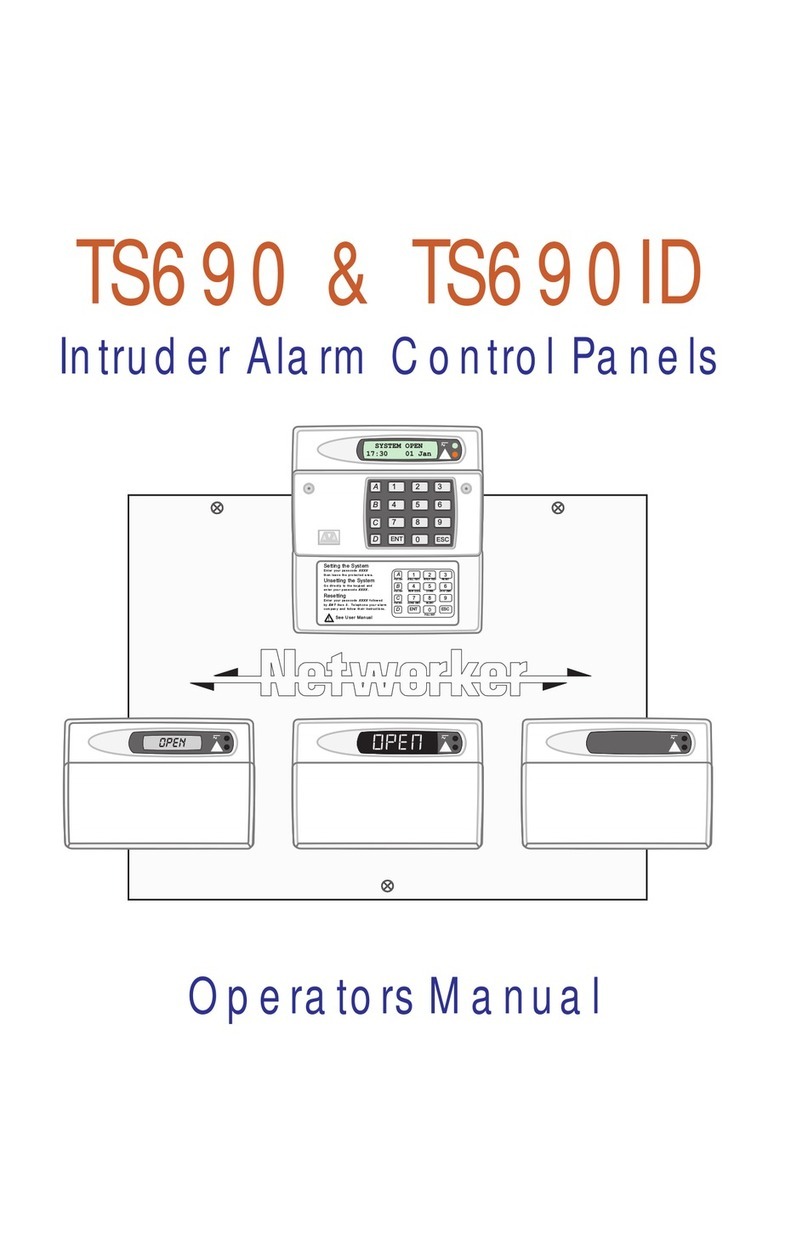
Menvier Security
Menvier Security TS690 User manual

